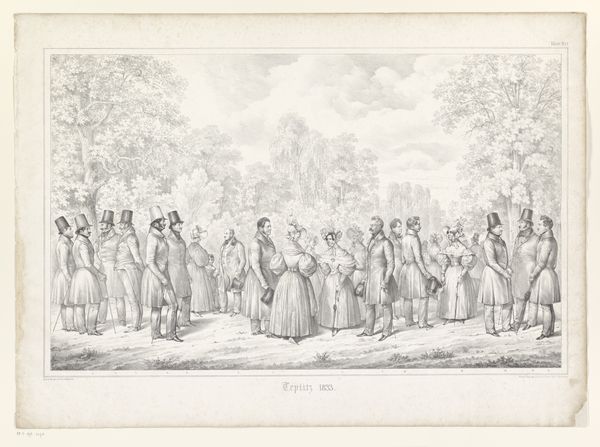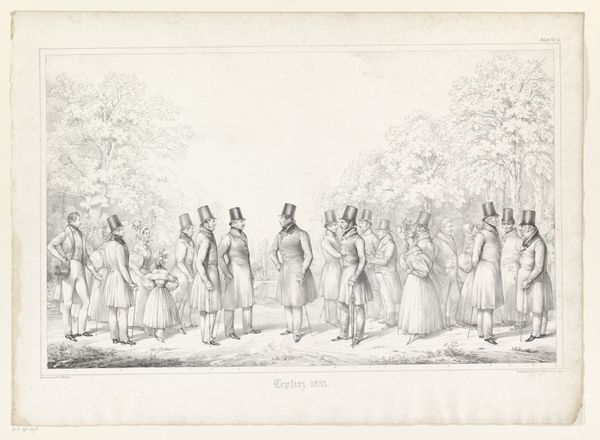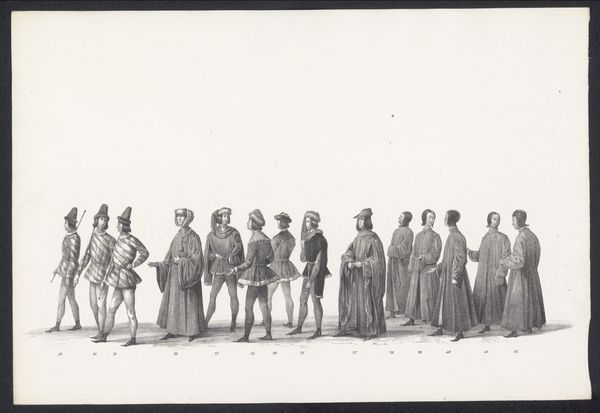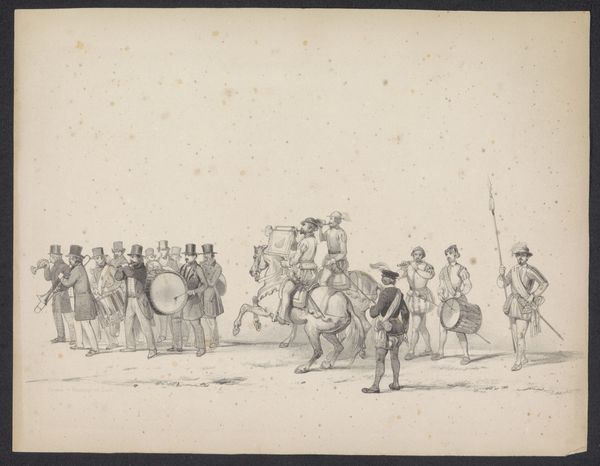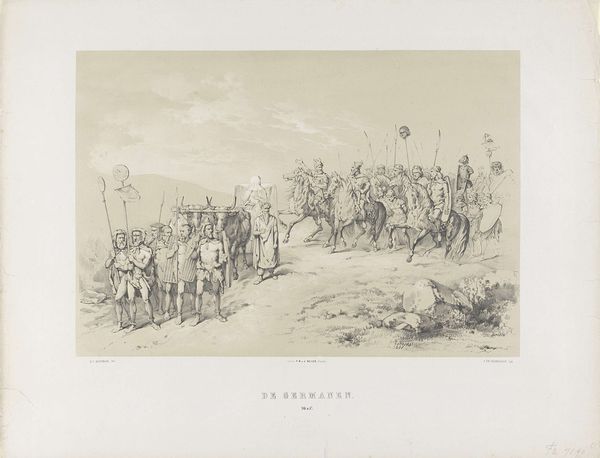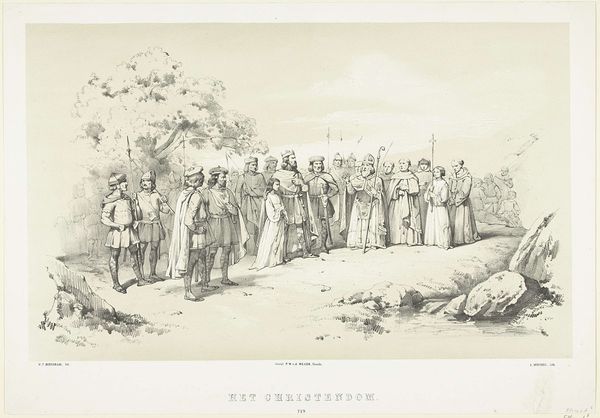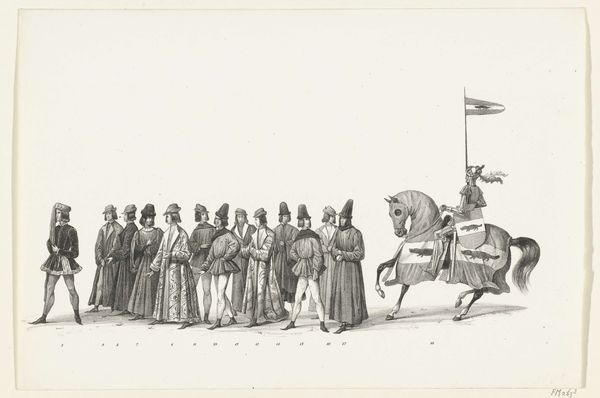
drawing, pencil
#
portrait
#
drawing
#
aged paper
#
light pencil work
#
pencil sketch
#
old engraving style
#
personal sketchbook
#
group-portraits
#
romanticism
#
pen-ink sketch
#
pencil
#
pen work
#
sketchbook drawing
#
pencil work
#
genre-painting
#
academic-art
#
sketchbook art
Dimensions: height 518 mm, width 720 mm
Copyright: Rijks Museum: Open Domain
Curator: Look at the details in "Portretten van negentien personen te Teplice", a pencil drawing created in 1833 by Theodor Hosemann. There's a real formality in the figures despite the natural backdrop, don't you think? Editor: It’s incredibly still; an almost unsettling rigidity. Everyone appears poised, self-conscious even. The contrast with the suggestion of nature is interesting. Is it a stage, or are these social roles just inherent to their positions? Curator: That tension between the individual and societal expectations definitely resonates. Teplice was a renowned spa town at the time. Think about it – who are these people and why are they gathered together in this way? Are they aristocrats, diplomats, artists, or something else? What does it mean to immortalize the moment of "being seen" at this spa, especially when class and societal position dictated all public appearances? Editor: It raises such key issues concerning identity. It really brings home that 19th-century notion of 'respectable society’ and the restrictions—particularly for women. Notice how grouped together and almost uniform the women appear. And how much do you think their attire enforces ideas of conformity and limits the possibilities of gender expression within that frame? Curator: Exactly. Consider the composition: it mirrors a societal hierarchy. Men predominantly in the front, active roles within society implied, while the women are literally and figuratively positioned further back. Editor: This work truly underlines art's role as both reflection and reinforcer of societal norms. Thanks for illuminating that tension. It definitely pushed me to reflect further. Curator: It really highlights how fashion itself was – and still can be - a signifier. Viewing practices in this art are powerful lenses through which to analyze issues around historical power and representation.
Comments
No comments
Be the first to comment and join the conversation on the ultimate creative platform.
